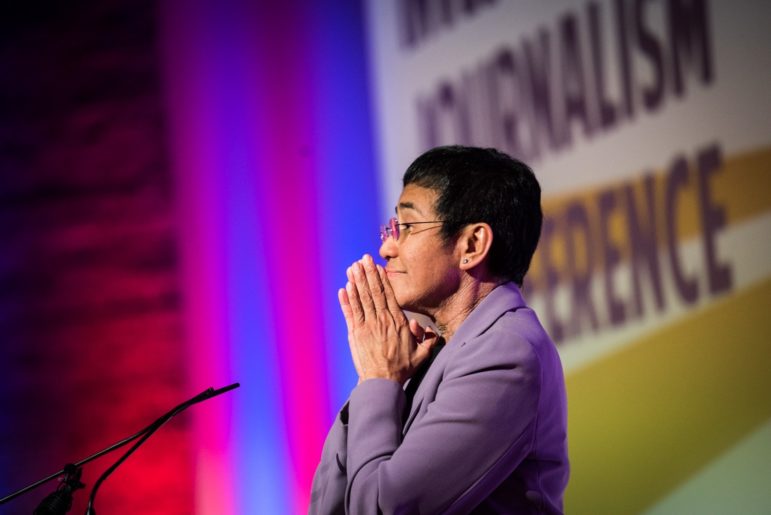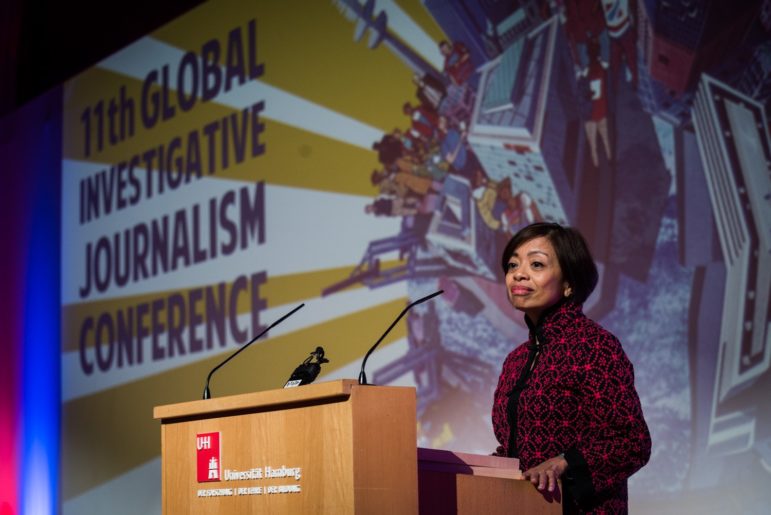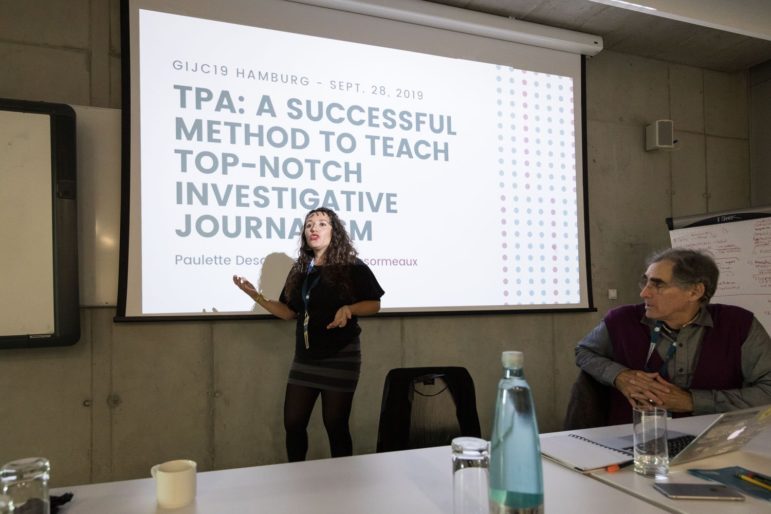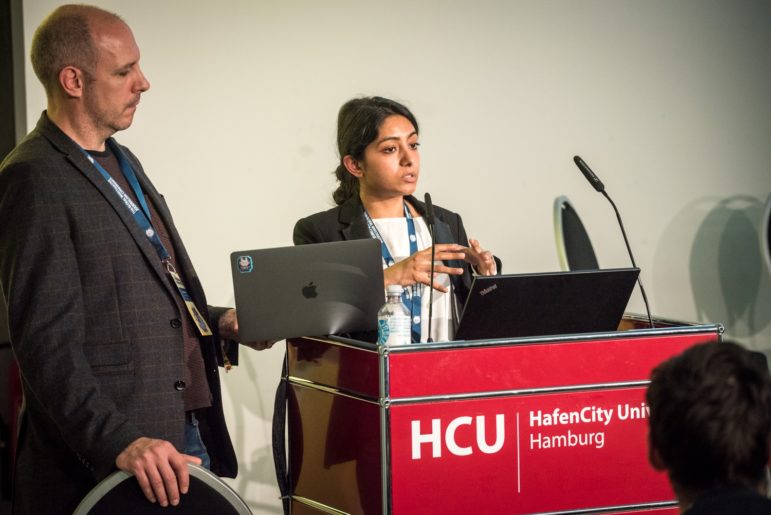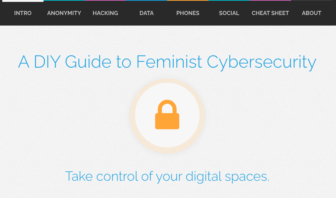

Image: GIJN
Chapter 3: Safety, Discrimination & Harassment
Read this article in
Guide Resource
Resources for Women Journalists – A GIJN Guide
Chapter Guide Resource
Chapter 1: Women in Leadership
Chapter Guide Resource
Chapter 2: Networks For Women Journalists
Chapter Guide Resource
Chapter 3: Safety, Discrimination & Harassment
Chapter Guide Resource
Chapter 4: Grants, Fellowships, and Awards for Female Journalists
Chapter Guide Resource
Chapter 5: Finding Mentors
Chapter Guide Resource
Chapter 6: Female Experts
Chapter Guide Resource
Chapter 7: Spotlight on Women in Investigative Journalism
Chapter Guide Resource
Chapter 8: Reports on Women’s Issues
Safety Resources
Safety is something all journalists worry about, but women face additional threats with gender-based violence, harassment, discrimination in the newsroom and in the field, and disproportionate online attacks. Below are some resources to improve security for women in the industry.
Read the resources on the safety of women journalists by UNESCO, or the organization’s 2022 report The Chilling: What More Can News Organizations Do to Combat Gendered Online Violence? UNESCO also has a newsletter worth subscribing to.
How to Report Safely: Strategies for Women Journalists & Their Allies, is a free and self-paced online course from the Knight Center.
How to Report Safely — Resources for Women Journalists, Newsrooms, and Allies is a video on YouTube. Also in French and Spanish. (UNESCO, Knight Center, IWMF)
Physical Safety: Solo Reporting and Physical Safety: Mitigating Sexual Violence are resources created in 2019 by the Committee to Protect Journalists. CPJ conducted a survey on safety issues facing women journalists in the US and Canada, described in this blog post. The new sections are additions to the CPJ Safety Notes collection, which buttresses its Journalist Security Guide.
The International Women’s Media Foundation has set up an Emergency Fund to assist women journalists with legal and medical bills, as well as relocation costs.
GIJN has compiled a general resource page of safety guides and organizations that provide aid to journalists in danger. Assistance ranges from medical and legal aid to moving a journalist out of the country where their safety is threatened.
The European Center for Press & Media Freedom has launched an alarm center where women media workers can report attacks via encrypted messaging and seek help. “Women staff will read your report confidentially,” those who run the scheme promise.
Coalition Against Online Violence (CAOV) is made up of 45 journalism and online security organizations that support women journalists facing online harassment.
Safety of Women Journalists a resource guide by Free Press Unlimited.
The International Federation of Journalists is working with the International Labour Organization on a campaign to stop violence against women journalists. Resources include toolkits, publications, and links to relevant policies. The IFJ provides support and resources to directly address problems and to pressure local governments for meaningful change. In November of 2019, IFJ launched guidelines to fight back collectively against online trolling of women journalists.
We now know that self-care can be as important for safety and well-being as security measures. To minimize burnout, mitigate trauma and boost your focus, check out these yoga videos from the IWMF for morning and evening practice, designed specifically for women journalists.
Troll-Busters.com is a global campaign that offers “online pest control for journalists,” focusing on women and specializing in identification, mitigation, and reporting of online threats and harassment. They also have resources and training specific to women journalists.
PEN America has an Online Harassment Field Manual with practical tools and tactics to defend against online hate and harassment. PEN describes the manual as “a one-stop shop of advice, guidance, and resources on cyber-stalking, doxing, hateful speech, and other forms of digital harassment.” In addition to universal advice on “what to do,” the resource includes information on relevant US state laws.
The Byte Back campaign was launched in 2016 by the International Federation of Journalists and partner organizations in the Asia Pacific region to stop cyber-bullying and online harassment of women journalists. The campaign provides resources, tactics, and support to combat online harassment and trolling.
Access Now’s Digital Security Helpline works with individuals and organizations around the world, free of charge. They can help improve digital security practices and provide rapid-response emergency assistance within two hours in English, Spanish, French, German, Portuguese, Russian, the Austronesian language Tagalog, Arabic, and Italian.
A DIY Guide to Feminist Cybersecurity covers tools for blocking online tracking, circumvention and anonymity tools, defending against malware, strong authentication practices, privacy on social media, as well as device and communication encryption (Spanish version).
Speak Up & Stay Safe(r): A Guide to Protecting Yourself From Online Harassment, by Feminist Frequency, describes tactics for combating doxxing, privacy on social media and gaming platforms, compartmentalization practices, strengthening authentication security, personal website security, physical mail privacy, and related advice.
Alerta Machitroll is a Colombia-based Spanish-language campaign launched by Fundación Karisma in 2015 to combat violence against women in the digital environment. The group provides an Alert Generator and self-help strategies to fight online harassment with humor.
The Crash Override Network’s resource center lists tools, guides, and services useful in instances of online abuse, including doxing and non-consensual intimate images, and protection for personal data, passwords, and devices.
Online SOS is a nonprofit organization that focuses on US journalists dealing with any type of online harassment and provides free support regarding law enforcement, legal remedies, employment-related options, case management, escalation to platforms, expert referral, and crisis coaching.
Take Back the Tech is a global collaborative campaign aimed at taking control of technology to end violence against women. They provide assistance to victims of technology-related harassment, digital safety toolkits for devices, and resources for rights, self-care, and survivor strategies. They also support and help launch local campaigns.
The Worst (& Safest) Countries for Solo Female Travel in 2019 is a study of 50 countries by travel journalists Asher Fergusson and Lyric Benson. Plus 42 tips on how women can stay safe while traveling alone.
A 200-page resource guide “Safety of Female Journalists Online” has been developed by the office of the OSCE Representative on Freedom of the Media (RFoM).
Resources on Discrimination and Harassment
Discrimination and harassment in the workplace are common problems plaguing many industries, including journalism. According to a report by the Council on Foreign Relations, 18 countries still require women to have their husband’s permission to work, 59 provide no legal protections against sexual harassment in the workplace, and 104 restrict the kinds of jobs women can hold. Pay discrimination is global. Below are some resources currently available to help address gender discrimination and sexual harassment in the workplace.
Women in News has developed a toolkit for employers and employees to deal with (and prevent) sexual harassment in their media organizations, also translated in Arabic, Spanish, French, Vietnamese, Burmese, and Russian. The toolkit includes a practical guide, awareness posters, sample policies, surveys, and communication templates. WIN also has various resources to help managers create better working environments for women. The organization works in sub-Saharan Africa, the Middle East, and Southeast Asia. Their podcast, The Backstory, explores issues of women leadership in newsrooms.
Women Deserve Better. The WHO Could Lead the Way, is a 2022 analysis written by professor Sheila Tlou and the former Prime Minister of New Zealand, Rt. Hon. Helen Clark.
Gender & Language. How do highly gendered languages affect non-binary people and how does society see them?
Reporting on Sexual Violence in Conflict (Dart Centre Europe). Responsible journalism can bring attention and insight to crimes that people have difficulty finding adequate words for. Careless reporting, however, can make things worse by adding to distress and exposing survivors to further danger. These guidelines are written by journalists and filmmakers who regularly work on conflict-related sexual violence issues. They emerge from a recognition that as a collective enterprise journalism needs to do more to define and share best practices. The goal is to achieve more accurate and insightful reporting while reducing the risk of further harm to those brave enough to tell their stories.
In the US, the TIME’S UP Legal Defense Fund connects women who experience sexual harassment and retaliation in the workplace with attorneys and media specialists.
Washington-based Press Forward has a step-by-step guide for journalists being sexually harassed in the workplace, plus other relevant resources. These are designed with US laws and policies in mind, but can be helpful elsewhere.
In France, Prenons la une is an association of women journalists advocating for fair representation of women in the media and professional equality in newsrooms. The network provides support to women facing discrimination and harassment.
The Brazilian Association of Investigative Journalism (Abraji) conducted research into challenges faced by women in the industry. Based on the findings, Mulheres No Jornalismo Brasileiro lists recommendations for Brazil’s media outlets to address gender-based harassment, discrimination, and violence. In 2018, 50 Brazilian female journalists also released a video manifesto against sexual harassment and discrimination using the hashtag #DeixaElaTrabalhar on Facebook and Twitter. The hashtag phrase translates to “Let Her Work.”
Cameroon Media Women launched as a WhatsApp group and a closed Facebook page in 2018 in response to the #MeToo movement. With the #StopSexualHarassment237 hashtag, referring to Cameroon’s country code, women journalists held a Twitter discussion and shared videos discussing the issues facing women in the newsrooms.
The #MeToo movement has made a mark in Asia. At a GIJN panel at Uncovering Asia 2018, women journalists shared stories and tips on investigating and covering sexual harassment and assault in China and Japan. Also, here’s a series on investigative journalists’ role in covering the #MeToo movement in China from GIJN’s Hong Kong bureau.
The Second Source in the UK was set up to tackle harassment in the media. The organization aims to promote awareness, inform women of their rights, and create change in the industry.
A recent study by Women in News, “Glass Ceilings: Women in South African Media Houses” identifies common issues of sexism in media organizations, and provides recommendations to address them.
Digital Women Leaders offers women journalists free one-on-one coaching for 30 minutes, including on issues such as workplace discrimination, harassment, and the pay gap.
The Totem Project, in partnership with the IWMF, has created several online courses on harassment in different languages.

